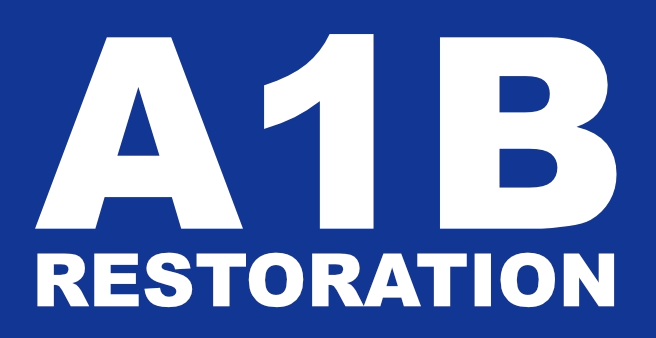The Cost of Water Damage Restoration Services
Water damage can strike at any time, leaving homeowners and businesses in a state of disarray. From burst pipes to natural disasters, the need for water damage restoration services can arise suddenly and without warning. Understanding the costs associated with these services is crucial for anyone facing such an unfortunate event. In this blog post, we will delve into the various factors that influence the cost of water damage restoration, provide actionable tips on how to manage these expenses, and highlight the importance of acting swiftly to mitigate further damage.
Understanding Water Damage Restoration
Water damage restoration involves a series of steps taken to return a property to its pre-damage condition. This process often includes water extraction, drying and dehumidification, cleaning and sanitizing, and finally, restoration. Each of these steps requires specialized equipment and expertise, which contributes to the overall cost.
Water Extraction
The first step in water damage restoration is water extraction. This involves removing standing water from the affected area using pumps and vacuums. The cost of water extraction can vary depending on the volume of water and the size of the area affected. On average, homeowners can expect to pay between $1,000 and $4,000 for this service.
Drying and Dehumidification
Once the water is removed, the next step is drying and dehumidification. This process requires the use of industrial-grade fans and dehumidifiers to eliminate moisture from walls, floors, and other surfaces. The cost for drying and dehumidification can range from $500 to $1,500, depending on the extent of the damage and the duration of the drying process.
Cleaning and Sanitizing
After the area is dried, it is essential to clean and sanitize to prevent mold growth and eliminate any contaminants. This step includes cleaning carpets, upholstery, and personal belongings. The cost for cleaning and sanitizing can be anywhere from $200 to $1,000, depending on the items and area that need attention.
Restoration
The final step in the water damage restoration process is restoration. This may involve minor repairs such as replacing drywall and carpeting or major reconstruction like rebuilding entire rooms. The cost for restoration can vary widely, with minor repairs costing a few hundred dollars and major reconstruction running into the tens of thousands of dollars.
Factors Influencing the Cost of Water Damage Restoration
Several factors can influence the overall cost of water damage restoration services. Understanding these factors can help homeowners and businesses better prepare for the expenses involved.
Type of Water
The type of water causing the damage significantly impacts the cost of restoration. Clean water from a burst pipe is less expensive to handle compared to gray water from appliances or black water from sewage backflows. Cleanup and restoration for black water are more complex and hazardous, thus more costly.
Extent of Damage
The severity of the water damage plays a crucial role in determining the cost. Minor leaks affecting a small area will be less expensive to fix compared to extensive flooding that impacts multiple rooms or floors.
Duration of Exposure
The longer water sits before being addressed, the more damage it can cause. Prolonged exposure can lead to mold growth, structural damage, and increased restoration costs. Acting quickly can help minimize these expenses.
Location of Damage
The location of the water damage within the property can also influence the cost. For instance, damage to a finished basement with carpeting and drywall will be more expensive to restore compared to an unfinished basement with concrete floors.
Statistics and Examples
According to the Insurance Information Institute, water damage and freezing account for nearly 29% of all homeowner insurance claims in the United States. The average cost of a water damage claim is approximately $10,234.
Consider a scenario where a homeowner experiences a burst pipe in their kitchen. The water damage affects the kitchen flooring, cabinets, and adjacent living room carpet. The water extraction and drying process alone could cost around $3,000. Cleaning and sanitizing the affected areas might add another $800. If the cabinets need to be replaced, and new flooring installed, the restoration costs could easily exceed $5,000, bringing the total to around $8,800.
Actionable Tips to Manage Water Damage Restoration Costs
While water damage restoration can be expensive, there are several steps homeowners and businesses can take to manage these costs effectively.
Get Multiple Quotes
It’s essential to obtain quotes from multiple water damage restoration companies. This allows for a comparison of services and costs, ensuring you get the best value for your money.
Act Quickly
As mentioned earlier, the longer water sits, the more damage it can cause. Acting quickly to address water damage can help minimize restoration costs and prevent further issues such as mold growth.
Document the Damage
Take photos and videos of the water damage as soon as it occurs. This documentation can be crucial when filing an insurance claim and ensuring you receive adequate compensation for the restoration work.
Check Insurance Coverage
Review your homeowner’s insurance policy to understand what types of water damage are covered. Some policies may cover water damage from burst pipes but not from flooding. Knowing your coverage can help you plan for potential out-of-pocket expenses.
Perform Regular Maintenance
Regular home maintenance can help prevent water damage from occurring in the first place. Check for leaks, maintain your plumbing system, and ensure your home is adequately sealed against potential water entry points.
Conclusion
Water damage restoration is a multifaceted process that can be costly, but it is essential for returning a property to its pre-damage condition. By understanding the factors that influence the cost, taking swift action, and following the actionable tips provided, homeowners and businesses can better manage the expenses associated with water damage restoration. Remember, the key to minimizing costs and damage is to act quickly and efficiently.

